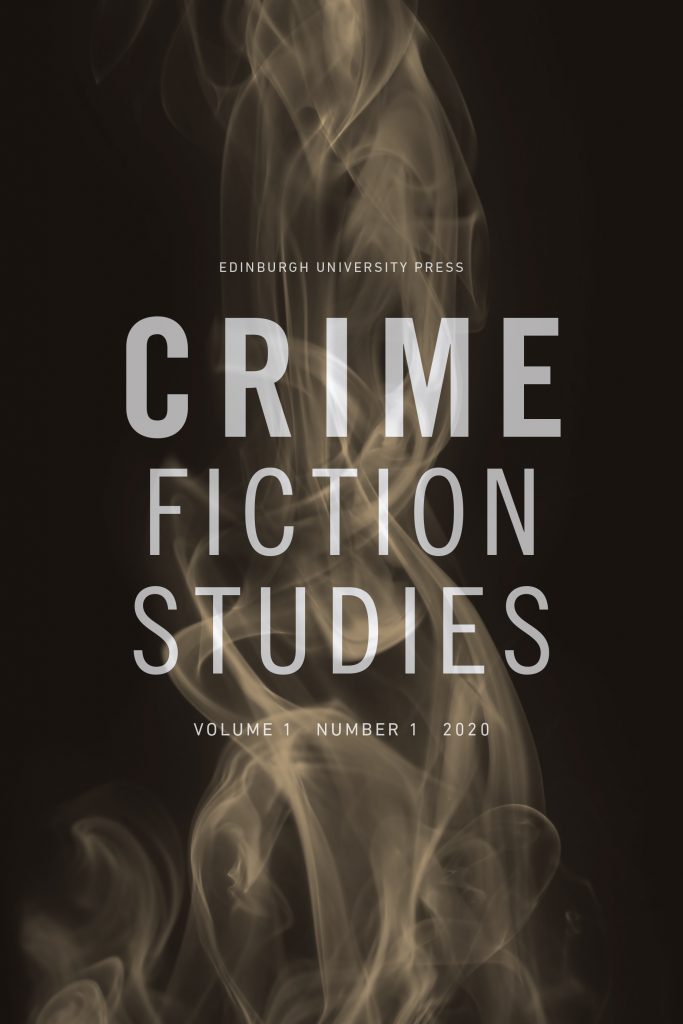
By Thomas Leitch
Mystery and detective stories have always been my comfort-food reading. From the time I was weaned away from Nancy Drew and the Hardy Boys to Arthur Conan Doyle and Agatha Christie in the eighth grade, I’ve never found any reading material so blissfully escapist as those timeless tales of wisecracking private eyes patrolling the mean streets of Los Angeles or winsome old ladies in wheelchairs gently but firmly decimating the population of Little-Puddleton-on-the-Marsh.
I still beam with pride when I recall working out the solution to The Egyptian Cross Mystery before Ellery Queen saw fit to reveal it to me and how chagrined I was that despite my strenuous efforts, I was blindsided by the endings of Dorothy L. Sayers’s The Nine Tailors and John Dickson Carr’s The Three Coffins. In my salad days, my fondness for puzzles led me to devour the formal detective stories of the Golden Age. I’ve never lost touch with that first love, but over the years I’ve gradually broadened my taste for different flavors of mystery, detective fiction, and suspense fiction, even though my paramount interest in all these tales of crime and (usually) punishment remains the possibilities they offer for immersive escape. Even mysteries with the most downbeat endings—like the Inspector Gently television series based on Alan Hunter’s novels, which seem determined to reveal the dark truth about every social institution in northern England—offer the priceless lure of definitive hermeneutical closure: by the last scene, we know everything there is to know about all the characters, the innocent as well as the guilty.
I started reviewing mystery and detective fiction for Kirkus Reviews over thirty years ago with the vague expectation that if I built up knowledge of the genre, eventually I could write an equally definitive history. Kirkus, a pre-publication review journal whose target audience was librarians wondering which forthcoming titles to purchase and movie producers alert for which books might be turned into successful TV series like True Blood and blockbuster movies like Gone Girl, turned out to be a perfect fit for my obsessively escapist reading habits. A typical month presented me between ten and twenty new titles to review. And they were new in every sense of the word. I was never distracted by anyone else’s opinions of the latest Alexander McCall Smith or Harlan Coben or Denise Mina or C.J. Box because nobody else had read them yet. By the time I realized that like Tristram Shandy, I was getting further behind in my dreams of coverage every year, I’d long since lost my desire to write a history of the genre, along with my faith that any conceivable history could be definitive. Instead, reading and reviewing mystery became my refuge from both the untidy real world and the equally exigent world of academic publishing. Unlike scholarly essays that took months or monographs that took years to write, reviews of books I’d spent a day or two reading never took me longer than an hour to write and gave me a welcome sense of closure and accomplishment.
For years I thought of my expanding mystery library as a valuable legacy. When an unusually ill-informed tour guide told my daughter many years ago that the college she was visiting had “a really big library—it must have over five thousand books”—my daughter sniffed that we had more books than that in our basement. Now that I’ve come to see the downside of this legacy, an epic clutter that makes my study look like Dumbledore’s, I’m grateful that I’ve been able to shift to receiving online galleys for review before the mounting piles of books fall over on one of our cats.
In the meantime, I’ve acquired a vast but largely unsystematic knowledge of a field for which my love has steadily deepened. But I’ve called on this knowledge only intermittently in my own scholarly work. I’ve written books on Perry Mason, on crime films, and on Alfred Hitchcock, a figure eagerly embraced by the Mystery Writers of America even though he had nothing but disdain for detective stories. And I’ve been moved to teach undergraduate and graduate courses in mystery fiction over the years. But I’ve never written that history of the detective novel or an equally definitive taxonomy of the mystery story. Instead, I’ve been lucky enough to be able respond to the occasional invitation from more sharply focused scholars by drawing on my long-standing familiarity of the field for a series of occasional and highly discontinuous reflections.
The most recent of these concerns my revisiting of Tzvetan Todorov’s foundational observation that every whodunit “contains not one but two stories: the story of the crime and the story of the investigation.” In his 1966 essay “The Typology of Detective Fiction,” Todorov proceeds from this unarguable assertion to distinguish the different relations between the past represented by the story of the crime and the present represented by the story of the investigation. I read his essay shortly after it was first translated into English and was deeply impressed and influenced by it. But half a century on, it seemed to me that its state-of-the-art analysis, which had now slid imperceptibly from my own present into my past, would benefit from revisiting, refreshing, and revising, especially in view of the very different relations between the present and past enshrined in one key detective subgenre Todorov had glossed over (the police procedural) and another that had mostly arisen since he wrote (the historical or period mystery). Reluctant as I was to take issue with Todorov, I found that different kinds of detective and mystery stories constructed relationships between the present and the past more widely divergent than his analysis had acknowledged, and that the detective story as a going concern projected a considerably more complicated attitude toward a whole series of pasts than Todorov had disclosed. Fueled by my nostalgia for my early adventures among structuralists like Todorov, I dived back into my earlier immersion in both structural typology and detective fiction.
The result was ‘The Many Pasts of Detective Fiction,’ (forthcoming in the next issue of Crime Fiction Studies) an essay I thoroughly enjoyed writing, but one I soon realized told only half the story Todorov had omitted. The essay does its best to devise an updated typology of detective subgenres’ different attitudes toward the past and the present. But because it remains within the genre’s orbit, it says nothing about the relation between detective fiction’s attitudes toward the historical past and the analogous attitudes of true-crime books, non-mystery historical fiction, non-mystery historical films, and history textbooks. After immersing myself intermittently in questions about these other genres for several months, I’d planned to present the results in ‘History According to the Whodunit’ at this year’s Captivating Criminality conference in Bath. But the coronavirus pandemic canceled this year’s conference and pushed back this presentation for at least a year, even as it gave me more compelling reasons than ever to escape into thinking about escapist fiction. In a phrase I’ve never encountered at the end of a whodunit: To be continued.
Thomas’ article will appear in the next issue of Crime Fiction Studies, the innovative new journal from the International Crime Fiction Association. Published twice a year, Crime Fiction Studies provides an academic platform for crime fiction from every age and genre.







Mystery is one of the most fascinating fields. A very nice article.
Your ability to convey deep wisdom in a clear and concise way is amazing. This post really made me reflect!